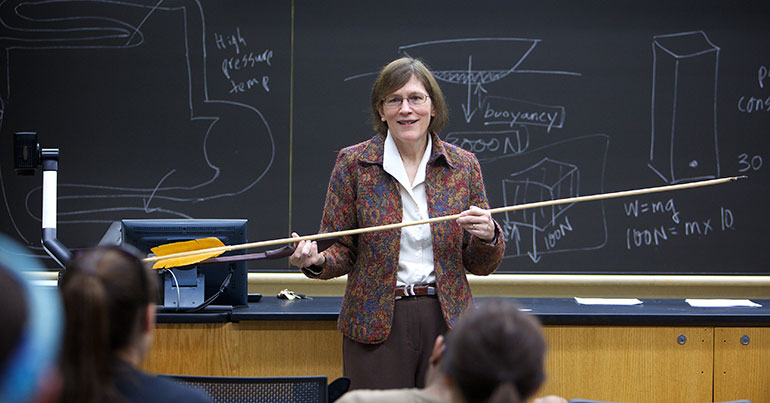Schools are failing to teach the basic processes through which our brains produce new knowledge – and one professor has decided enough is enough

‘New’ is exciting. It is also too often conflated with ‘better’. Perhaps nowhere is this more apparent than in the world of education, where teachers are under pressure to teach more effectively, parents constantly search for ways to improve their child’s upbringing and lifelong learners voraciously digest self-improvement listicles in a bid to prepare themselves for the rise of the ‘gig economy’.
But in our unending quest for betterment, we often overlook tried-and-tested techniques – and we generally don’t start by building a strong foundation.
After volunteering for five years in an urban school district in the US, Barbara Oakley, an engineering professor at Oakland University in Michigan, decided to create a free online course, or massive open online course (MOOC), that offers practical advice to help people learn more effectively.
“The kids were great but the structure, the environment and even the teachers were not necessarily optimal in any way, shape or form,” Oakley told Southeast Asia Globe. “It just got me to realise that we don’t teach students how to learn.”
You learn what’s happening in your brain when you procrastinate and how to trick your brain into not procrastinating.something most traditional ‘theory of education’ classes fail to cover”
The course, filmed using a makeshift green screen studio in Oakley’s basement, uses metaphor and Microsoft 98-era animations to unpack complex topics, such as procrastination, memory and motivation, to give course participants lots of practical takeaways to help them improve the way they learn.
To date, more than 1.8 million people from 200 countries have signed up to Oakley’s ‘Learning How to Learn’ course, which is available in English, Chinese, Spanish and Portuguese via the MOOC provider Coursera.
According to Oakley, the course has been so well received because it reveals the nuts and bolts of learning but manages to do so in a fun and entertaining way.
“It teaches you how to work in a less frustrated way. You learn what’s happening in your brain when you procrastinate and how to trick your brain into not procrastinating, something most traditional ‘theory of education’ classes fail to cover,” she said.
The methods and techniques that Oakley advocates in the course borrow from well-established neural science. One example is the Pomodoro technique, which involves setting a timer for 25-minute stretches of focused work followed by regular ‘rewards’ such as listening to a song or going on a short walk. During the reward phase, our brains consolidate the information we have just learned, helping us to order our thoughts and forge stronger mental connections between pieces of information.

Initially developed by renowned software developer Francesco Cirillo, the technique is effective because our brains have two modes of thinking: ‘focused’, in which we build on previous knowledge like a pinball bouncing around a machine with lots of bumpers, and ‘diffuse’, in which our brains are afforded the space required to create new neural pathways, and, thus, learn new knowledge. We can’t use both modes at the same time, so taking sufficient breaks allows us to employ both ways of thinking.
Unfortunately, according to Oakley, such techniques are unlikely to be taught by professors any time soon due to vested interests in the world of higher academia.
“There are lots of wonderful people in academia, but if academic skill centres truly fix [students’ study techniques], then the [students] will be gone and will not be continued users of their service. There’s this sort of crisscross: they want students to learn better but they help them in a way that means students will continue to rely on them,” she said.
“They don’t get them to learn how to learn independently, but students want to learn independently. That is why the course has been so popular.”
This article was published in the October edition of Southeast Asia Globe magazine. For full access, subscribe here.
Read more and Discover the SCIA Education Experience here.

